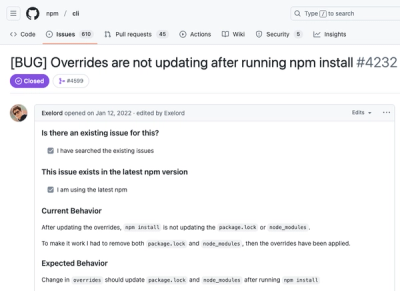Redux Thunk Promise





Thunk and FSA promise middleware for Redux.
Benefits
- It lets you work with thunks, promises or both. You get to choose what to use, depending on what you need.
- It lets you write sync & async action using the same syntax.
- And it lets you take advantage of the best of both worlds:
- The ability to dispatch other actions, like loading, and get information from the state (from thunks).
- The simplicity of firing async calls and getting the result in the reducer, even if it's not successful (from promises).
- If your thunk returns a promise, you'll get a unified result in your reducer, an FSA-compliant promise.
Installation
npm i -S redux-thunk-promise
Then, add this middleware in your Redux store:
import { createStore, applyMiddleware } from 'redux';
import thunkPromiseMiddleware from 'redux-thunk-promise';
import { reducers } from './domain';
const store = createStore(
rootReducer,
applyMiddleware(thunkPromiseMiddleware)
);
See a real-life example here, you can run it locally by cloning the repo and running npm start.
Usage
Let's say you want to define two actions, one to fetch tasks from your server (async) and other to mark tasks as completed in the UI (sync). You can do this by using the following code in your Redux container:
...
const mapDispatchToProps = dispatch => ({
fetchTasks: () => dispatch(actions.fetchTasks()),
completeTask: taskId => dispatch(actions.completeTask({ id: taskId })),
});
export default connect(mapStateToProps, mapDispatchToProps)(TodoList);
Note: you don't need to differentiate between async and sync actions in the container.
Then, you can write your async actions in different ways:
-
FSA promise: This is best suited for basic scenarios when you only care about the action. redux-thunk-promise will take care of sending it to the reducer, following the Flux Standard Action pattern. This means that your reducer will receive either the data or the error in the payload (see an example here).
Your only job is to create async actions this way:
import { createAction } from 'redux-actions';
import actionTypes from './action-types';
import tasksService from './tasks-service';
import { actions as uiActions } from '../ui';
const fetchTasksFromService = () => tasksService.fetchTasks();
export default {
fetchTasks: createAction(actionTypes.FETCH_TASKS, fetchTasksFromService),
completeTask: createAction(actionTypes.COMPLETE_TASK),
};
-
Thunk: in this case, you wrap the function into another function. With thunks, you can dispatch other actions, get information from the state or even get global arguments before/after the main action. For instance:
import { createAction } from 'redux-actions';
import actionTypes from './action-types';
import tasksService from './tasks-service';
import { actions as uiActions } from '../ui';
const fetchTasksFromService = () => ({ dispatch, getState, ...extraArguments }) => {
dispatch(uiActions.isLoading(true));
return tasksService.fetchTasks()
.then(() => actions.isLoading(false))
.catch(() => actions.isLoading(false));
};
export default {
fetchTasks: createAction(actionTypes.FETCH_TASKS, fetchTasksFromService),
completeTask: createAction(actionTypes.COMPLETE_TASK),
};
Note: No matter which approach you choose for your async actions, your reducers will receive an FSA-compliant action.
Using in combination with redux-actions
We recommend combining this library with redux-actions.






